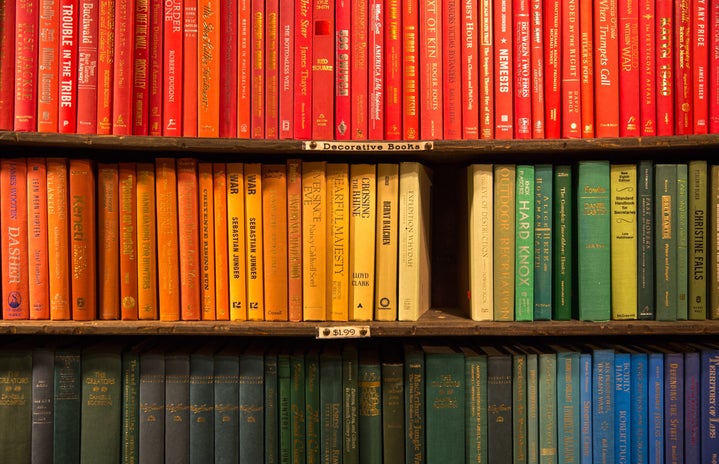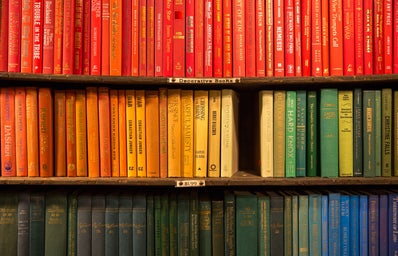LGBT representation in film, television, and literature has taken massive leaps forward only in the past few years. In part due to the rise of streaming services which allow a wider range of content to reach an audience, and in part due to social media which has both amplified the voices of fans and put them in direct contact with creators and increased the role of word-of-mouth in advertisement, we are now seeing explicit queer content even in media geared towards children, and having at least one queer character is practically a given in any current Western television series with a target audience of teens or adults. Witnessing this phenomenon has been heartwarming; today’s queer children and teenagers get to grow up seeing themselves reflected in their entertainment, age appropriately, which is arguably of pronounced importance at an age where fiction is often an essential tool in identity formation. No longer does seeing Blue Is the Warmest Color at a far too young age need to be a generational experience, nor do films with queer content need to be sought out on seedy illegal streaming sites in 360p.
But despite the undeniable net positive of these developments, there are some equally undeniable adverse effects often neglected in media discourse. Namely, the deterioration of what could be called queer media literacy, and perhaps even more importantly, taste.
Historically, queer writers and filmmakers have inserted their experiences into their creations in one of two ways: either by voluntarily remaining in the margins, thus allowing themselves more freedom of explicit expression, or by navigating the realms of allegory, subtext, and ambiguity. Explicit and accessible (both in the sense of being readily available and artistically unchallenging) ‘representation’ has become a major phenomenon only perhaps over the past decade, and even then, mostly only in the cultural West.
Now, we seem to be steering dangerously close to an era where this is hailed as the only acceptable flavor of queer media content. Subtext and ambiguity are swiftly rebranded as ‘queerbaiting’ while characters who are anything less than morally upstanding lawful citizens and endings deviating from a fairytale happily ever after are being shut down as ‘bad representation’. On the flip side, whether or not something includes sufficient representation seems to be becoming the only yardstick by which its quality is measured while campaigning for inclusion in Disney-owned blockbusters is the be-all-end-all of activism for a great number of blue-haired youths on Twitter.
All of this runs the great risk of producing a generation of LGBT adults entirely out of touch with their cultural lineage.
It is vital to the formation of our identities to understand that queer people have lived and loved and made great art always and everywhere. How can we maintain and pass on this knowledge, if the parameters of acceptable representation only include art that has barely been possible for more than a decade, and only inside a very limited cultural sphere? In addition, the ability to know where to seek out the marginal, to delight in the strange and unusual, to tolerate shock and see beauty in ugliness is an essential queer life skill, as is the ability to pick up on the unspoken and insert oneself into a narrative not written with one in mind. These are skills obtained only through arduous practice. Does this onslaught of ostensibly queer but sterile, family-friendly, hetero-friendly Netflix originals and YA novels not disincentivize that practice? Already we are seeing young adults attach their identities to children’s cartoons, teen fantasy series, and blockbuster cinema, simply because there is no outright need to seek out more challenging material. Already we are seeing that more challenging material dismissed as ‘problematic’ under any possible pretext, simply because ‘harmful tropes’, or personal uncomfortable feelings, override cinematic quality.
Which of course brings us to the matter of taste. A blanket ban on tragic endings, morally ambiguous characters, and undefined relationships and identities simply lead to bad art. If the only thing a work of fiction needs to accomplish to be considered good is to check enough representation boxes, the result is bad art. We know that as a community, we are not only capable of but in fact, inclined to produce good art, not despite but often because of our experience in navigating otherness, marginality, and subtlety. Why on earth should we be demanding our share of the soulless and the commercial? How can we look at what has been produced by us, for us, and still turn around to demand inclusion in the next formulaic Hollywood tentpole? At some point, it simply becomes a question of dignity.
Of course, mainstream representation would serve the singular important purpose of presenting the possibility of a queer existence to those queer children who do not yet know they are queer or understand that their feelings are a blessing, and do not have the knowledge or resources to seek out the representation they need. A gay superhero or a transgender space wizard on the big screen would unquestionably uncomplicate many a queer journey through puberty into adulthood, and it is our responsibility as secure queer adults to see those journeys made as easy as we possibly can. The problem arises when we start pretending our stake in this is personal. It is not. We have the option to seek out film festivals and poetry readings, look up anthologies, and read up on biographies. We can comfortably sit back and enjoy subtext and allegory, knowing that no work of fiction has the power to confirm or deny our identities. We can get to know our history and our culture, and in doing so become better equipped to pass them on.


